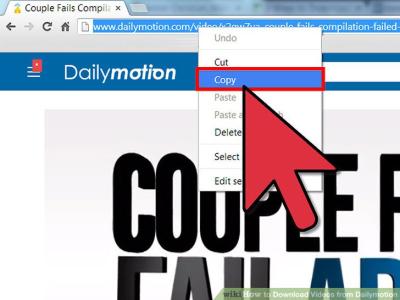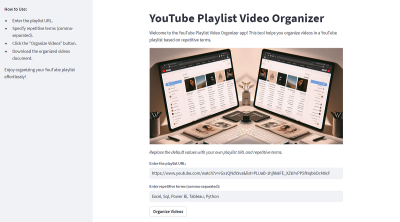Are you struggling to grow your YouTube channel? Well, you're not alone! Analyzing your competitors could be the secret ingredient to elevate your channel strategy. By understanding what others in your niche are doing, you can pinpoint opportunities, refine your content, and connect more effectively with your audience. Let’s dive into why competitor analysis is essential for your YouTube success!
Why Competitor Analysis is Important for Your Channel

Competitor analysis isn’t just about keeping tabs on what others are doing; it’s a strategic approach to boost your channel's performance. Here are some compelling reasons why you should invest time in this analysis:
- Identify Successful Content Strategies: By observing what types of videos are popular among your competitors, you can uncover themes, formats, and styles that resonate with viewers. For instance, if you notice that tutorial videos with engaging thumbnails and clear titles get substantial views, consider integrating similar elements into your own content.
- Understand Audience Engagement: Pay attention to the comments section of your competitors' videos. What are viewers praising or criticizing? This feedback can offer invaluable insights into your target audience’s preferences, enabling you to tailor your content accordingly.
- Discover Gaps in the Market: Maybe you’ve found a competitor who dominates your niche but lacks coverage on a specific topic. This presents a golden opportunity for you! By creating content that fills these gaps, you can attract viewers searching for that information.
- Benchmark Performance: Regularly comparing your channel's analytics with competitors can help you gauge your growth. Use metrics like views, watch time, and subscriber growth to identify areas where you can improve. For instance, if a competitor has a significantly higher subscriber count, analyze their call-to-action strategies and see what you can adapt.
- Refine Your Branding: Analyze how competitors position themselves. What branding elements do they use, and how do they communicate their unique value? By understanding their branding strategies, you can refine your own to stand out in a crowded marketplace.
In conclusion, competitor analysis is not just a one-time task; it’s an ongoing strategy that can transform your channel. By keeping an eye on your competitors, you empower yourself with knowledge that can elevate your content, engage your audience, and ultimately, grow your channel. So grab a notepad, start analyzing, and watch your YouTube journey flourish!
Also Read This: How to Insert a YouTube Video into Keynote for Easy Presentation Integration
3. Identifying Your Competitors on YouTube
Finding your competitors on YouTube might seem like a daunting task, but it’s actually quite straightforward. The first step is to define your niche. What type of content are you creating? Are you focusing on beauty tutorials, tech reviews, or maybe travel vlogs? Once you have a clear idea, you can start identifying who else is in that space.
Begin by using YouTube’s search bar. Type in keywords related to your content and see what channels pop up. Pay attention to the channels that appear consistently in the search results; these are likely your direct competitors.
Another effective method is to look at your favorite creators. Who do they collaborate with or mention? This can lead you to other channels that are relevant to your niche. You can also use tools like Social Blade or Vidooly to get insights into other channels’ performance and subscriber counts.
Once you've identified a list of competitors, take a moment to evaluate their content style. What are they doing well? Are they focusing on specific topics, using unique thumbnails, or engaging with their audience in a particular way? This analysis can give you clues on how to differentiate your own channel.
Finally, consider joining niche-specific communities, such as Facebook groups or Reddit threads. Engaging in discussions can reveal who the major players are and may even introduce you to emerging channels that could soon become competitors.
Also Read This: Can You Watch NESN on YouTube TV? A Guide for Sports Fans
4. Key Metrics to Analyze in Competitor Channels
Once you've pinpointed your competitors, the next step is to delve into the metrics that matter. Analyzing these key performance indicators (KPIs) can provide valuable insights into how to shape your strategy:
- Subscriber Growth: Look at how quickly your competitors are gaining subscribers. This can indicate their popularity and effectiveness in engaging their audience.
- Video Views: Examine the average views per video. This metric can tell you how much traction their content is getting and whether their audience is actively engaging with the material.
- Engagement Rate: Check likes, comments, and shares on videos. A high engagement rate often signals that content resonates well with viewers. You can calculate the engagement rate using the formula: (Likes + Comments + Shares) / Total Views.
- Content Frequency: How often are they posting? Regular uploads can keep an audience engaged. Compare this to your upload schedule and see if you need to adjust your frequency.
- Video Length: Note the average video duration. Are shorter or longer videos performing better? This can inform how you structure your own videos.
Additionally, consider using tools like TubeBuddy or VidIQ for in-depth analysis. These platforms can provide detailed breakdowns of your competitors’ performance, including keyword strategies and tagging practices.
In summary, understanding who your competitors are and what metrics matter can empower you to refine your content strategy. By learning from their successes and pitfalls, you can carve out a unique space for your channel and attract a dedicated audience.
Also Read This: How Old Is Audrey from That YouTube Family? The Truth Behind Her Age
5. Tools for Conducting Competitor Analysis
When diving into competitor analysis for your YouTube channel, having the right tools can make all the difference. Here are some fantastic resources to help you gather meaningful insights:
- TubeBuddy: This browser extension is a must-have for serious YouTubers. It provides detailed analytics on your competitors’ channels, including their most popular videos, SEO scores, and even tag usage. You can also use it to perform keyword research directly related to your niche, which is super helpful for understanding what your audience is searching for.
- VidIQ: Similar to TubeBuddy, VidIQ offers a wealth of features for analyzing competitors. It provides a comprehensive dashboard that shows key metrics like views, watch time, and engagement rates. The best part? Their keyword research tool helps you discover trending topics and tags that could boost your content visibility.
- Social Blade: This tool is great for tracking the growth of YouTube channels over time. You can see how often competitors upload, their subscriber growth, and estimated earnings. Understanding these trends can help you identify successful strategies that you might want to emulate.
- Google Trends: While not YouTube-specific, Google Trends can show you the popularity of topics over time. This is particularly useful for identifying seasonal trends or spikes in interest that might affect your content strategy.
- Canva: If you're looking at branding and visuals, Canva can help you analyze the thumbnails and styles competitors are using. Understanding what visuals attract clicks can inform your own thumbnail designs, leading to higher click-through rates!
By leveraging these tools, you'll be equipped with valuable data that can inform your strategy and help you stand out in a crowded space. Remember, analysis without action is just data – so make sure to implement what you learn!
Also Read This: Watching Live Debates on YouTube: A Quick How-To
6. Interpreting the Data: What Competitors Can Teach You
Now that you’ve gathered data on your competitors, the next step is interpreting that information effectively. Here’s how you can turn raw data into actionable insights:
- Identify Patterns: Look for trends in your competitors' successful videos. Are they using specific keywords? What kind of content (tutorials, vlogs, reviews) resonates most with their audience? For instance, if a competitor's tutorial video on a trending topic garners thousands of views, that could signal a demand for similar content.
- Engagement Metrics: Pay attention to likes, comments, and shares. These metrics reveal what viewers are genuinely connecting with. If a competitor’s video receives numerous comments asking questions, that might indicate a gap in information that you could fill.
- Content Frequency: Analyze how often competitors upload videos. Consistency is key on YouTube; if a competitor uploads weekly and sees steady growth, consider adopting a similar schedule. Just make sure it’s sustainable for you!
- Audience Interaction: Examine how your competitors engage with their audience in the comments section. Are they responsive? Do they ask for feedback or suggestions? This engagement can provide insights into building a community around your own channel.
- Visual Branding: Look at the thumbnails and branding used by your competitors. High-quality, eye-catching thumbnails typically lead to higher click-through rates. Take note of the colors, fonts, and images they use and think about how you can improve your own visuals.
Ultimately, the goal is not just to mimic your competitors but to learn from them. Adopt their successful strategies, avoid their pitfalls, and carve out your own unique presence on YouTube. Remember, the data provides a roadmap, but your creativity will guide the journey!
Also Read This: How to Put a YouTube Video in iMovie: Editing YouTube Content for Your Projects
7. Developing Strategies Based on Competitor Insights
Once you’ve gathered valuable insights from your competitors, it’s time to put that information to good use. Developing strategies based on competitor analysis can give your YouTube channel a significant edge. Here’s how to do it effectively:
Identify Gaps and Opportunities: Start by analyzing what your competitors are doing well and where they are lacking. Are there topics they haven’t covered? Maybe they’re not engaging with a particular audience segment. By targeting these gaps, you can create content that attracts viewers who are looking for something different.
- For instance, if a competitor has extensive tutorials on a specific subject but lacks engaging storytelling, you could produce narrative-driven content on the same topic to captivate viewers.
- Utilize tools like TubeBuddy or VidIQ to find keywords that your competitors rank for but that you haven’t targeted yet. This can help you craft your video titles and descriptions for better SEO.
Content Scheduling: Analyze the posting schedule of your competitors. When do they upload their videos? Are they consistent in their timing? Use this information to plan your content calendar strategically. Consider posting on similar days or even at different times to capture a larger audience. The goal is to find a rhythm that works for you while keeping an eye on what others are doing.
Engagement Tactics: Pay attention to how your competitors engage with their audience. Are they responding to comments? Do they host live Q&A sessions? By adopting and adapting these engagement tactics, you can build a community around your channel. Think of ways to encourage viewers to comment or share your videos. Perhaps you could run contests or ask for viewer input on future content.
Collaborations: Consider collaborating with competitors who have a similar subscriber count or audience. This can be a win-win situation, exposing both channels to new viewers. For example, if you’re in the cooking niche and a competitor has a similar audience, a joint cooking challenge could attract viewers from both channels.
In essence, the key to developing strategies based on competitor insights is to be observant and adaptable. Use their strengths and weaknesses to carve out your unique space on YouTube.
8. Continuously Monitoring Your Competitors
Competitor analysis isn’t a one-time task; it’s an ongoing process. Continuous monitoring of your competitors can keep your channel relevant and responsive to changes in the landscape. Here are some tips on how to do this effectively:
Set Up Alerts: Use tools like Google Alerts or Mention to get notifications when your competitors release new content or are featured in the news. This keeps you in the loop and allows you to quickly analyze their new strategies. For example, if a competitor launches a new series, you can assess its reception and learn from their approach.
Regularly Review Analytics: Make it a habit to check the performance of competitor videos regularly. Look for trends in their view counts, likes, comments, and shares. If you notice a particular video format or topic is gaining traction, consider how you can incorporate a similar style in your content.
Engagement Monitoring: Keep an eye on the type and frequency of interactions competitors receive. Are they getting more comments than usual on specific videos? This can be an indicator of what resonates with the audience. Perhaps they’re incorporating viewer suggestions or responding to trending topics more effectively.
- Take note of the most engaging comments and consider addressing similar topics or questions in your videos.
- Also, observe how their audience reacts to various call-to-action prompts. Are they encouraging subscriptions, likes, or shares effectively?
Adjust Your Strategies: Use the insights gained from continuous monitoring to refine and adjust your strategies. If you see a competitor’s content style outperforming yours, analyze what makes it appealing. Is it the production quality? The storytelling technique? Adapt these elements to your own style without losing your unique voice.
By continuously monitoring your competitors, you’re not just staying informed; you’re constantly learning and evolving. This proactive approach can help you stay ahead in the competitive YouTube landscape.
 admin
admin








